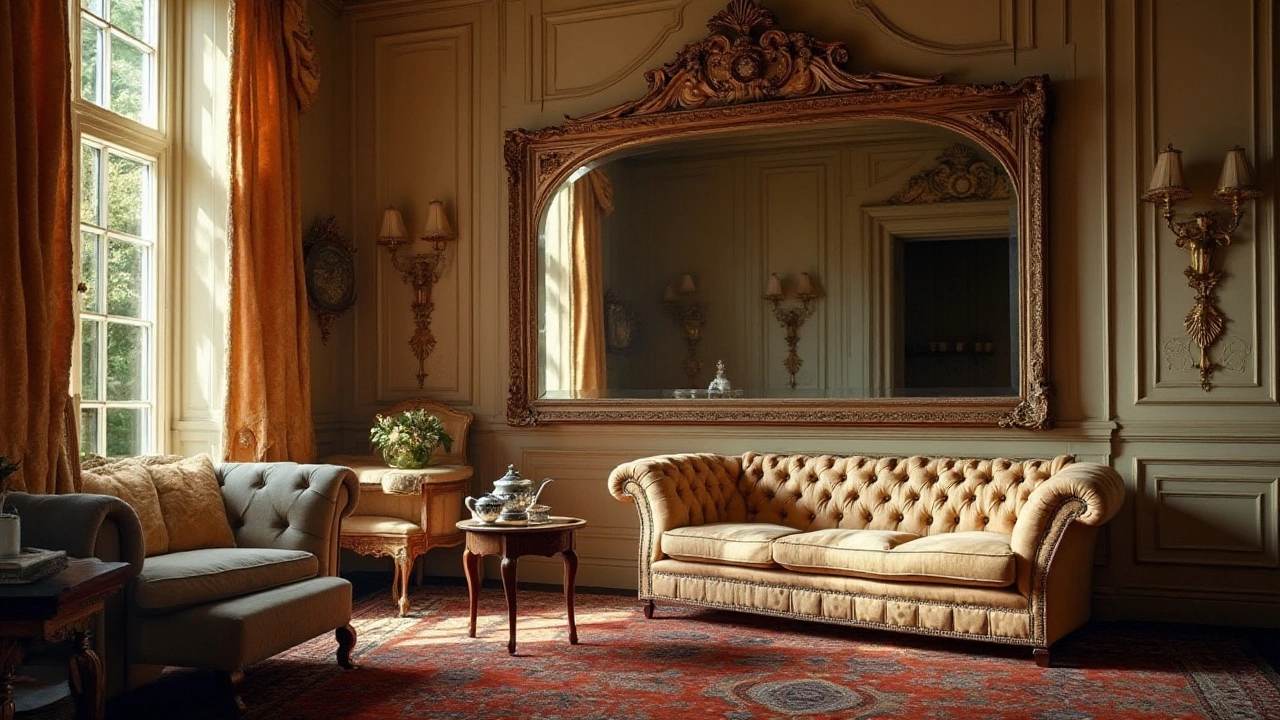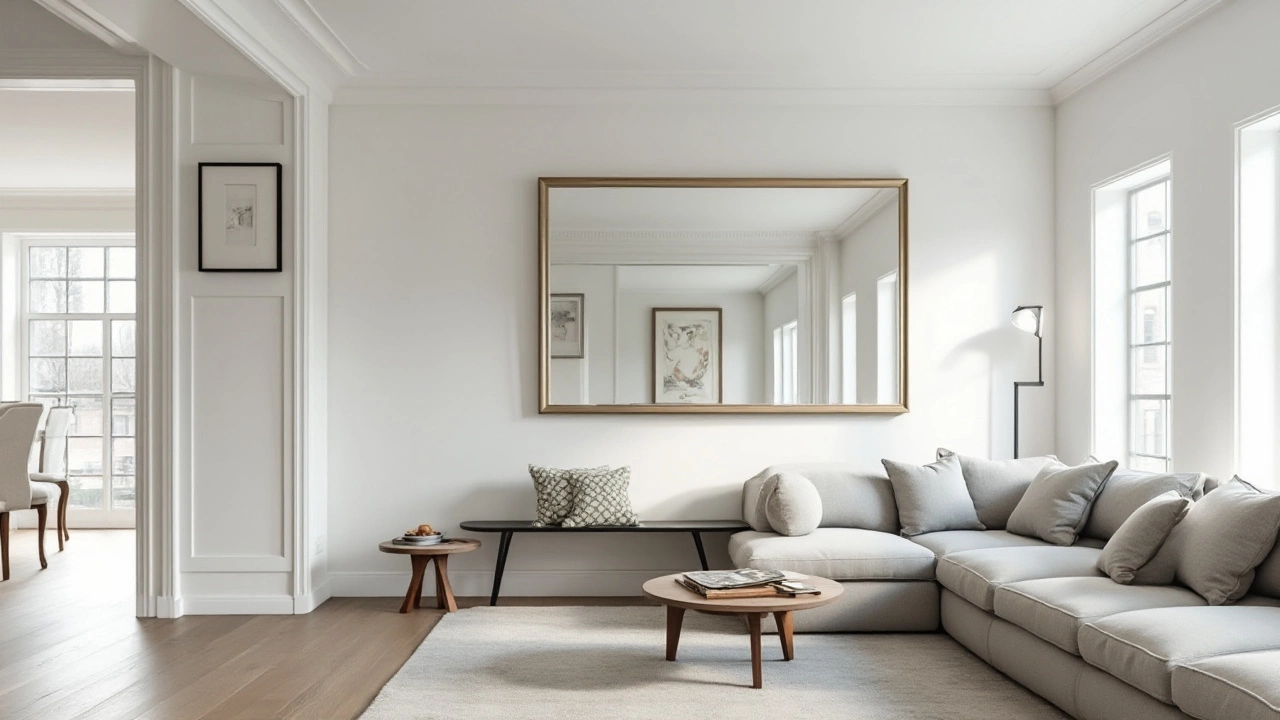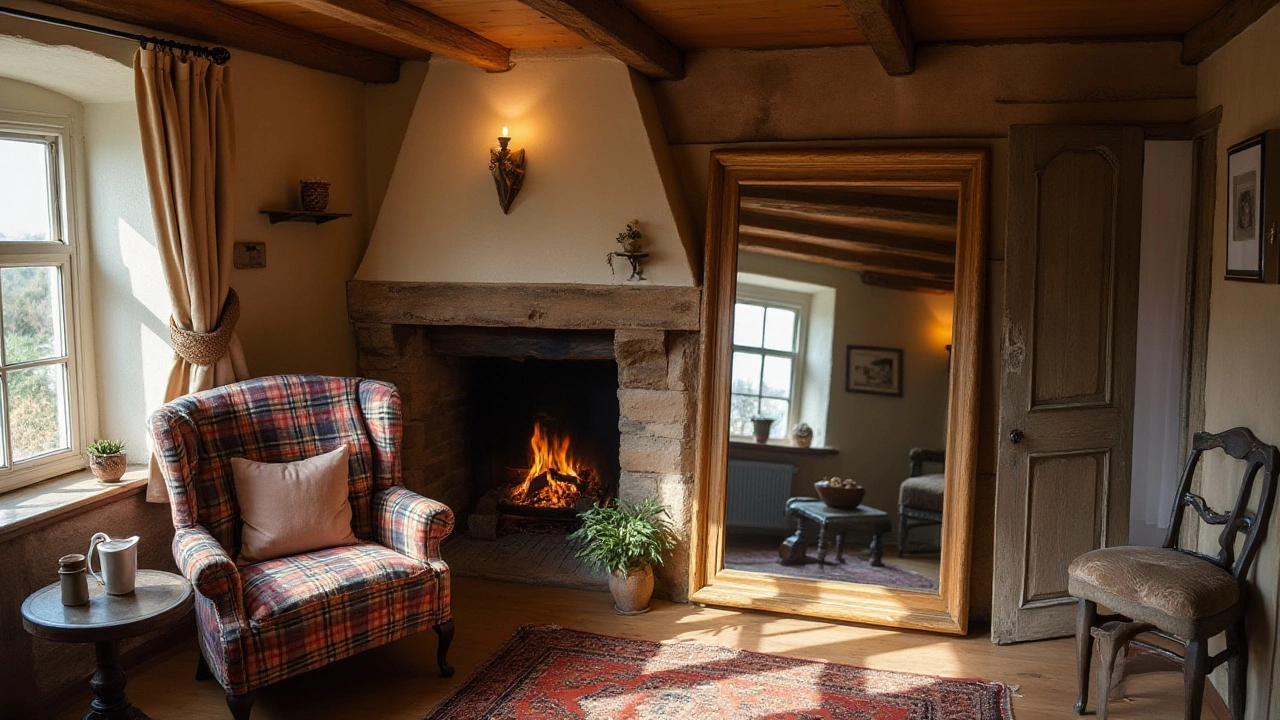Choosing the Best Mirror for Your Space

Mirrors have been an integral part of human life for centuries, serving purposes that extend well beyond their ability to reflect. Their transformative powers can dramatically alter the feel of a room, brightening dark corners and adding a sense of space where walls feel constricting.
The journey to selecting the perfect mirror involves understanding different types and their roles in enhancing your environment. It's about how the light dances off its surface and amplifies the beauty of your surroundings. Whether you're redesigning a room or simply adding a touch of elegance, knowing your options can make all the difference in creating a harmonious living space.
- Understanding Mirror Types
- Factors to Consider
- Mirror Shapes and Styles
- Material and Frame Considerations
- Placement and Impact
Understanding Mirror Types
When it comes to selecting the perfect mirror types for your home, the variety can be astonishing. Each type offers unique characteristics and advantages that can dramatically transform a room’s ambiance. Perhaps one of the most popular choices is the wall mirror, known for its versatility and ability to be used in both practical and decorative capacities. Wall mirrors are used to cover vast surfaces, enhancing the space by reflecting more light and creating the illusion of depth.
Beyond the basic wall mirror, you have options like floor mirrors which stand independently and are perfect for large rooms or spaces where wall mounts are not ideal. These mirrors can offer a full-length view from head to toe, essential in bedrooms or dressing rooms, combining aesthetics with purpose. Architectural Digest notes, "A strategically placed floor mirror can make a tiny space feel grand or give a mundane room an unexpected focal point."
Another remarkable variety is the leaner mirror. Unlike their upright peers, leaner mirrors rest casually against a wall, exuding a relaxed sophistication that suits modern and eclectic decor styles. Their intentional asymmetry offers a dynamic element to interiors. Additionally, bathroom or vanity mirrors are indispensable in grooming spaces. Framed preciously or left frameless for a sleek look, these mirrors encounter contact with water, making it essential to select moisture-resistant materials.
There are endless options for decorative mirrors, which come in all shapes and styles, often designed more for ornament than for function. Starburst mirrors, popularized during the mid-century modern era, are examples of such artistry. Their intricate designs often include a central mirror encircled by rays extending outward, making them a radiant centerpiece on any wall. Reproduction of vintage pieces maintains their classical allure, while contemporary styles push design boundaries.
Lastly, for those looking to experiment with illusions, convex and concave mirrors provide playful alternatives. While these aren't typically found in household decor, their unique curvature can abound creative implementations in gardens or art installations. Convex mirrors bulge outward, capturing wide fields of view, whereas concave mirrors curve inward and can project a focused reflection, adding an extraordinary twist to conventional decor.
The choice of the right mirror is a blend of personal taste and practical necessity. Whether prioritizing utility or ornamentation, understanding the characteristics of various mirrors helps in making an informed decision. After all, a mirror doesn’t just reflect your appearance; it reflects your style.
Factors to Consider
When it comes to selecting a mirror that truly enhances your space, there are several crucial factors to evaluate. It's not just about aesthetic style; practicality and function must align with your needs. One must first consider the size of the room. Large mirrors can significantly amplify a space, making cramped quarters feel open and airy. Conversely, a small mirror can get lost in vast expanses unless strategically placed.
Lighting plays a vital role as well. Mirrors reflect both natural and artificial light, so placing them opposite a window can maximize light and banish even the darkest corners. In dimly lit areas, a mirror positioned near a lamp can spread light more effectively, transforming mood and ambiance. This use of reflection enhances the atmosphere, making your home not just aesthetically pleasing but comforting too.
Complementing with Decor
Each home has its unique style, and so should your choice of mirror. If your decor features modern, minimalist lines, a frameless or metal-framed mirror may complement your furnishings beautifully. Should your space sport a more classic or rustic ambiance, consider mirrors framed with wood or even ones with ornate detailing that nods to the past. Choosing a mirror that aligns with your decor style creates harmony that enhances the entire room.
"Mirrors are like jewelry for the home. They can dress it up, reflect its personality, and even create a sense of grandeur." - Anonymous Home Decor Specialist
Functionality Matters
Beyond aesthetics, it's essential to remember the functional use of mirrors. Consider where and how a mirror may be utilized most effectively. A vanity mirror needs adequate lighting for practical use in daily grooming routines. Alternatively, full-length mirrors near entryways offer one last appearance check before heading out. These practical considerations guide you towards a selection that’s both stylish and serviceable, intertwining beauty with utility seamlessly.
When sorting through different mirror types, don't shy away from seeking styles that excite you personally. After all, a mirror is a reflection of not only what's visible but also of your personal taste and style. And sometimes, investing in an antique or custom piece can present that perfect touch of personality and history, making the mirror a conversation starter in itself.

Mirror Shapes and Styles
When it comes to selecting the perfect mirror, mirror types offer a rich tapestry of shapes and styles, each crafted to complement a specific room, design, or personal taste. The classic rectangular mirror, for instance, remains a perennial favorite due to its ability to fit seamlessly in various settings, from the sleek modern minimalist bathroom to the grand Victorian hallway. Its clean lines suggest a sense of order and balance, perfect for layering against colorful wallpaper or above a console table to enhance its geometric allure. Alongside this timeless shape, we find oval and round mirrors, which introduce soft curves that can break the monotony of a boxy space, adding a hint of elegance and romance.
Bold curves aren't just limited to these; consider arch mirrors, which add an architectural flair to interiors. Frequently associated with the grandeur of cathedral designs, arch mirrors can serve as a statement piece in any room. They draw the eye upwards, creating an illusion of height and space, an especially valuable trick in urban apartments lacking vertical depth. On the other end of the spectrum, asymmetrical mirrors are also gaining popularity, especially within artistic and quirky spaces. These mirrors draw attention with their unconventional designs, serve not just functionally, but also as a conversation starter.
As trends evolve, many homeowners are embracing eclectic styles that mix elements from different eras, allowing mirrors to complement or contrast with existing decor. A rustic mirror with a hand-carved wooden frame, for example, can warm up an industrial interior or cozy cottage lodging, echoing a sense of history and craftsmanship. In contrast, contemporary frameless mirrors add a touch of modern luxury with their sleek finish, particularly when strategically placed to catch and throw light across the room. According to interior designer Kelly Hoppen, "A mirror is a designer’s best friend, but only if you know how to wield it correctly. Proper placement and selecting the right shape can make an ordinary room extraordinary."
If you're keen on exploring unconventional styles, you might appreciate unique etched or distressed mirrors, which lend a vintage feel and often accompany bohemian or eclectic home ideas. Their surfaces reflect light in intriguing ways, enhancing the room's depth and mood. In some homes, statement mirrors with exaggerated baroque frames might evoke the charm of a bygone era, marrying history with luxury. Importantly, trends in mirror shapes can sometimes surprise with their innovation. The rise of the "bubble" mirror—a series of small, interconnected circular mirrors creating a playful yet refined structure—testifies to the ingenuity in the mirror design industry.
Understanding the symbiotic relationship between mirror shapes and your room's geometry is key. Whether you lean towards a streamlined contemporary look or something with a bit more texture and nostalgia, it's essential to envision the best mirrors for the setting. For those keen on home decor, knowing these styles can open avenues for your creativity, allowing your space to express its unique personality. With mirrors, the magic truly lies in their ability to merge function and art, enriching our everyday environments with beauty and light.
Material and Frame Considerations
Choosing a mirror is as much about its structure as it is about its surface. The material of the mirror and the frame that surrounds it play crucial roles in determining its longevity, aesthetic appeal, and how it fits within your space. Glass is the traditional material used for mirrors, known for providing a clear reflection. However, glass can be treated in various ways, such as silvering for clarity and antique treatment for an aged effect. The thickness of the glass can affect its durability and reflective quality. Thicker glass often means better durability, but it can also add significant weight, which might limit wall placements.
Besides the glass, the frame's material also bears significant weight on the decision-making process. Wooden frames bring warmth and a classic look, while plastic can offer a modern, cost-effective alternative. Metal frames might add an industrial touch, with options like brass, bronze, and aluminum each contributing their unique aura to the room's atmosphere. When contemplating frames, consider not only the predominant material but its finish. A matte finish delivers subtlety, whereas a glossy one stands out, reflecting light differently. The choice of frame should complement the rest of the room’s decor for cohesive design.
The style of the frame, whether simple or ornate, hinges on personal taste and the existing interior. For minimalistic interiors, frameless mirrors or those with understated frames are often ideal. In contrast, Victorian or vintage settings might benefit from intricate, patterned frames, stimulating visual interest. An interesting fact to note is that the beveled edge on mirrors has been a popular choice for many as it adds a craftsman's touch without the need for a heavy frame. Enthusiasts often praise minimalist lines for their ability to coordinate seamlessly with diverse styles.
As famed interior designer Nate Berkus once put it, "Your home should tell the story of who you are, and be a collection of what you love." Choosing the right mirror material and frame helps narrate this tale with charm.Additionally, eco-conscious choices involve reclaimed or recycled materials, aligning with sustainable living trends. Opting for environmentally friendly options can reduce impact while maintaining style.
Let's not overlook the impact of modern technology in the evolution of mirrors. Smart mirror frames integrate devices, offering features such as lighting, time displays, or even Bluetooth capability. These additions demand careful material selection to accommodate electronics while maintaining structural integrity. It's fascinating how traditional decor elements have adapted to technological advancements, showcasing a new intersection of function and modern living.
Whether your choice gravitates towards rustic wood, gleaming metal, or cutting-edge composite materials, the synergy between the mirror's core and its frame lays the groundwork for an exquisite room enhancer. Remember, in the end, that every polish and hue in your mirrored piece should reflect the essence of your personality and the beating heart of your home's design.

Placement and Impact
When it comes to the strategic use of mirrors, their placement can dramatically alter the ambiance and perception of space within a home. Mirrors have an uncanny ability to reflect both natural and artificial light, making rooms appear brighter and more open. Yet, it's not just about filling a blank wall; the magic lies in positioning. Placing a mirror opposite a window can bring the outdoors in, bouncing sunlight across the room and creating an illusion of a second window. This simple trick gives the feeling of an extended space, particularly in tighter, more constrained areas like hallways and bathrooms.
The right mirror shapes and styles are essential in achieving the desired impact. A full-length mirror hung on a door or in the corner of a small room can make it seem larger than its actual size. In contrast, a grand, ornately framed mirror can become the focal point of a living room, much like a piece of art. Such a mirror placed above a mantle or console table can achieve a balance of elegance and function. In bedrooms, mirrors can reflect personal tastes and styles, doubling as a central decorative element with practical benefits.
Several studies have shown that mirrors can influence mood and perception within a home. According to Susan M. Winchip, author of "Interiors: An Introduction," when selecting mirrors, consider what it will reflect. A mirror shouldn't face clutter or blank walls, as this reflection will also dominate the viewer's perception. Instead, align mirrors with artworks, plants, or other aesthetically pleasing items to amplify their presence in the room. This creates an intriguing play of reiterated beauty, capturing the eye and giving rooms a layered depth.
The choice of mirrors extends beyond mere mirror types or frames; it's about how their placement impacts daily life. Incorporating mirrors into frequently used areas can alter the routes through which inhabitants interact with their space. Consider a mirror in the entryway, which not only serves as a last-minute check before leaving home but also acts to reflect the warmth and light from the main living areas, welcoming both residents and guests alike. For compact living, mirrors placed opposite doors can give a seamless flow from room to room, strengthening the connection between spaces.
"A well-placed mirror can transform a home's dynamics, inviting light to dance through spaces in playful harmony," says interior designer Amelia Markham. "It's not just decor; it's how you connect with your surroundings."
Adding mirrors in strategic locations requires a balance between aesthetics and functionality. Mirrors over mantles add to the allure, reflecting softly twinkling candlelight or the flicker of a fireplace. Large mirrors tilted slightly downwards can reflect ceiling edges and lighting fixtures, drawing the eye upwards and creating the illusion of taller ceilings. As part of home decor, their reflective properties highlight every considered detail, drawing out the best attributes of your personal space. This seamless blend of function and design makes mirrors an indispensable tool for anyone looking to refresh and refine their home environment.